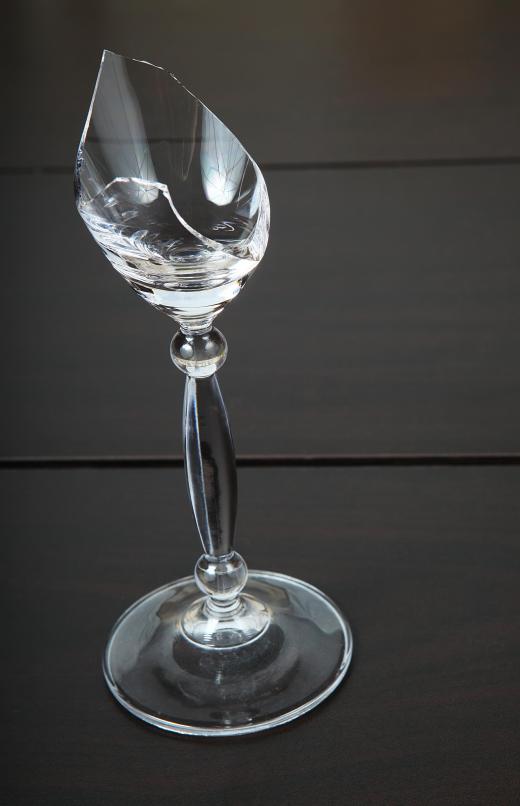What is Thermal Shock?
Thermal shock describes the way in which some materials are prone to damage if they are exposed to a sudden change in temperature. Glass and certain other materials are vulnerable to this process, in part because they do not conduct thermal energy very well. This is readily observed when a hot glass is exposed to ice water — the result is a cracked, broken, or even shattered glass.
The damage is a reaction to a rapid and extreme temperature fluctuation, but the process is somewhat more complicated than this. The shock is the result of a thermal gradient, which refers to the fact that temperature change occurs in an uneven fashion. Temperature change causes expansion of the molecular structure of an object, due to weakening of the bonds that hold the molecules in formation. The existence of the thermal gradient means this expansion occurs unevenly, and glass in particular is very vulnerable to this process.

In the example of the hot glass, this means that the rapid temperature change causes some parts of the glass to quickly become much hotter than other parts. This, in turn, causes uneven expansion, which puts stress on the molecular structure. If the stress becomes great enough, the strength of the material is overcome and the glass breaks.
Ceramics and glass are both vulnerable to this process, in part because they are not good conductors of thermal energy, and also because they do not have high tensile strength. Even so, these materials are often used for applications in which extremes of temperature are common, because they have very high melting points. The problem then becomes how to prevent thermal shock while still maintaining the temperature extremes required by the process.
Improving the shock resistance of glass and ceramics can be achieved by improving the strength of the material or reducing its tendency to uneven expansion. One example of success in this area is Pyrex®, the brand name of a type of glass that is most well-known to consumers as cookware, but which is also used to manufacture laboratory glassware. The type of glass traditionally used to make Pyrex® is called borosilicate glass, due to the addition of boron, which prevents shock by reducing the tendency of the glass to expand.
When materials must be tested for their ability to withstand temperature extremes, they are tested inside a thermal shock chamber. Within the chamber, they are exposed to rapid cycling of extreme hot and cold temperatures, to determine the temperatures at which the tensile strength of the material is overcome. This type of testing is used in a very broad range of industries, including land, air, and spacecraft development, as well as industrial manufacturing.
AS FEATURED ON:
AS FEATURED ON:











Discuss this Article
Post your comments